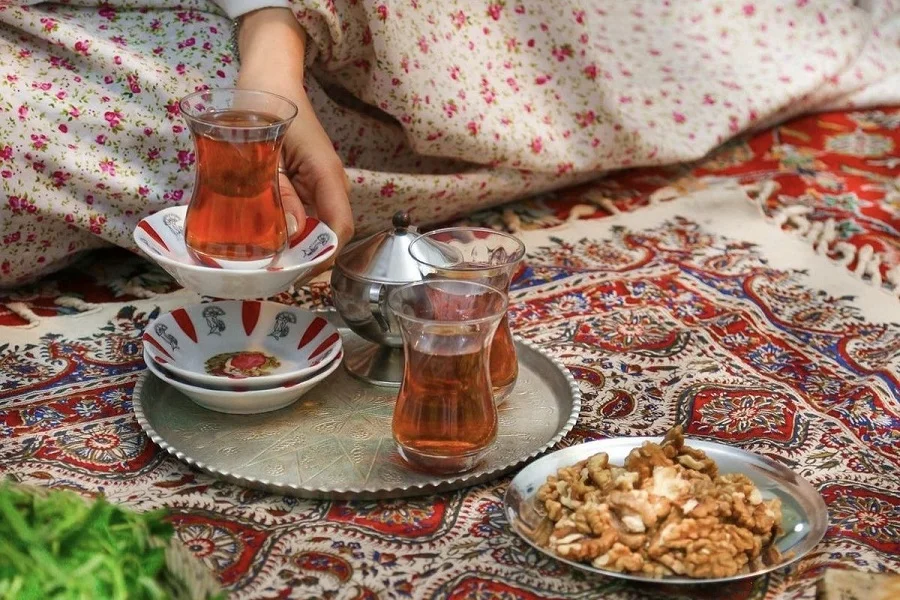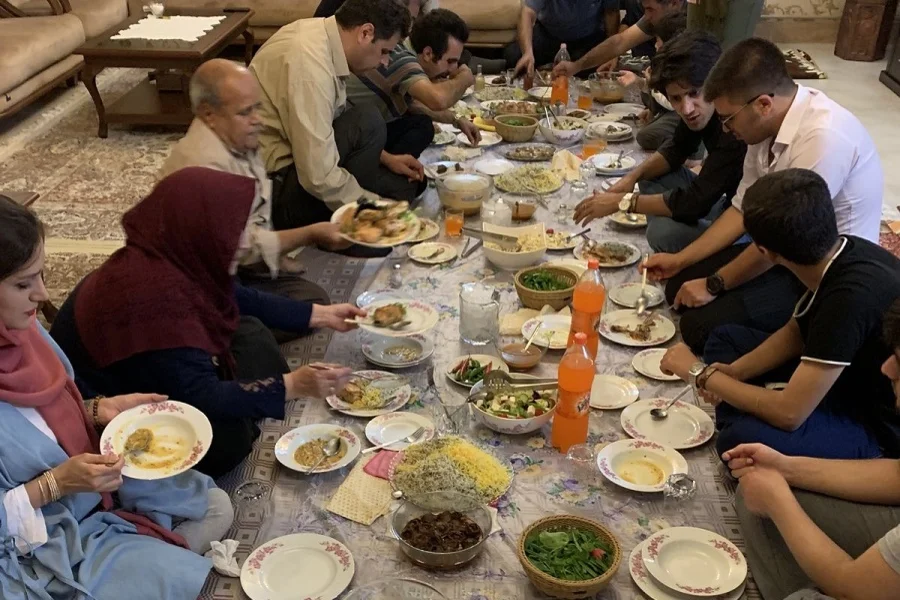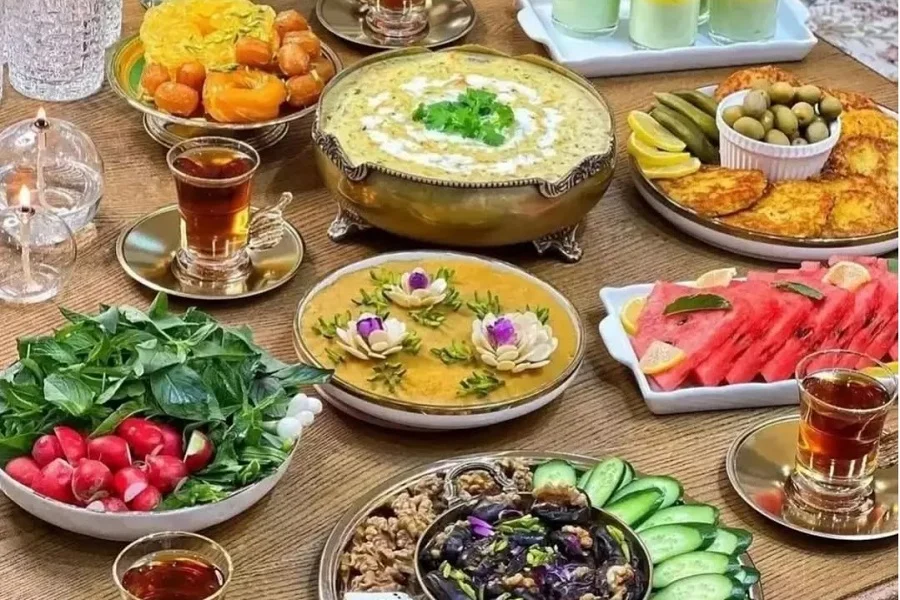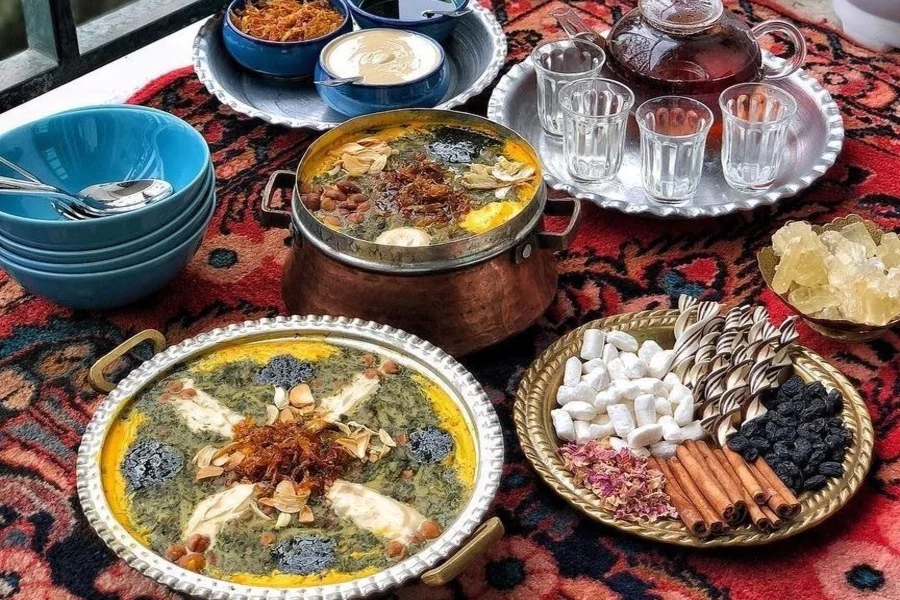
Ramadan in Iran
Ramadan, the holy month of fasting, holds profound significance for Muslims worldwide, including those in Iran, Saudi Arabia, and Malaysia. For 30 days, followers of Islam abstain from eating and drinking from dawn to sunset. But Ramadan is more than just fasting—it’s a time for reflection, growth, and kindness.
During this sacred month, Muslims strive to improve themselves and avoid harmful actions. Many focus on helping those in need by donating food, money, or their time to charities. Some even visit underprivileged neighborhoods to share meals and bring joy to others, if only for a day.
Fasting in Ramadan is not just a religious obligation; it’s also a chance to rejuvenate the body and mind. By stepping away from the usual routine of eating and snacking, individuals can reflect on their habits and cultivate a deeper sense of gratitude and empathy.
In essence, Ramadan is a month of spiritual renewal, compassion, and self-improvement—a time to connect with oneself, with others, and with a higher purpose.
You might be wondering—can you visit a Muslim country during Ramadan? What if restaurants are closed—where can a traveler find lunch? And is it okay for tourists to eat or drink in public?
In this post, you’ll find answers to these common questions, along with useful travel tips for visiting Iran during Ramadan 2025 (Sunday, March 2 – Sunday, March 30).

During Ramadan, Muslims begin their day with a pre-dawn meal called “Sahari” before the morning call to prayer (Azan). They then fast until sunset, breaking their fast at “Iftar.” Before eating a full meal, they typically start with warm liquids like tea, hot water, or soup to prepare their stomachs. Eating heavy food immediately after a long fast can be harmful, so they ease into their meal before enjoying a full dinner.
During Ramadan, Muslims are encouraged to avoid negative behaviors such as vain talk, lying, backbiting, slander, and spreading rumors, as emphasized in the Quran. Instead, the month is a time for self-discipline, kindness, and good deeds. Helping family, friends, and those in need is considered especially virtuous during this sacred time.
Ramadan is also a time for family reunions. Many people invite their loved ones to share Iftar, making it a special occasion to gather and reconnect. In today’s fast-paced life, finding time for family can be challenging, but the tradition of Iftar, with its beautifully prepared table, provides the perfect opportunity to come together and strengthen family bonds.
It’s worth noting that on the birth anniversary of Imam Hassan, many bakeries give away free bread, and some people buy bread to distribute to those in need. Acts of kindness like these are a cherished tradition during this month of forgiveness, as everyone strives to do their best in helping others.
In addition to fasting and striving for good character, Muslims dedicate three special nights during Ramadan, known as “Lailatul Qadr” or “Shab-e Ahia,” to deep prayer and reflection. On these nights, they stay awake, recite special prayers, and make heartfelt promises to God—setting personal and spiritual goals for their lives.
Muslims believe that Laylatul-Qadr, or the Night of Power, is when the Holy Quran was revealed to Prophet Muhammad. It is considered one of the holiest nights in Islam, and those who stay awake, praying and worshiping God, have their sins forgiven. They are also granted the reward of as many good deeds as if they had worshiped for 1,000 months (83.3 years). On this night, Muslims seek forgiveness from God and view it as a personal “new year,” a time to start fresh as better human beings. Many take this opportunity to bring their children and family members to the mosque, where they recite specific Surahs of the Quran and pray for a blessed year ahead.
The blessed month of Ramadan concludes with the celebration of “Eid al-Fitr,” marking the end of 30 days of fasting. On this joyous occasion, people celebrate by buying new clothes, gathering with family, and setting aside money to help those in need. They also visit mosques and shrines to pray alongside fellow Muslims, completing the religious acts of Ramadan and giving thanks for the strength and blessings of the month.

Don’t worry! While traveling in Iran during Ramadan, you won’t go hungry. However, it’s important to respect those who are fasting by avoiding eating, drinking, smoking, and chewing gum in public during the daytime. Keep in mind that eating is only restricted in the cities and on the streets. You are free to eat and drink while on the roads, as religious rules allow travelers to skip fasting during Ramadan.
Ramadan can impact your trip in different ways. Some businesses may close earlier than usual, while others might be busier. Roads and bazaars may feel quieter during the day, but this also means you can explore tourist attractions with fewer crowds, making for a more peaceful and enjoyable experience.
For locals, fasting for more than eight hours can be exhausting, so patience is key when asking questions or negotiating prices. Keep in mind that Ramadan follows the Islamic lunar calendar (Qamari), meaning its start date changes each year. As a result, the length of fasting varies, becoming longer or shorter depending on the season.
Traditional Sweets and Desserts to Try in Iran During Ramadan
Ramadan dishes in Iran are warm, sweet, and flavorful, traditionally served at Iftar. As mentioned earlier, people usually begin their Iftar with warm, sweet drinks like sweet boiled water with dates, saffron tea, or milk. Alongside these drinks, a variety of traditional sweets are enjoyed, some of which are listed below.
Zoolbia Bamieh
Zoolbia Bamieh is the most popular dessert during Ramadan, offering a much-needed sugar boost after a long day of fasting. These crispy, deep-fried sweets are best enjoyed with a hot glass of freshly brewed Persian tea. Found in almost every city in Iran, they are loved by everyone—whether fasting or not—thanks to their irresistible taste.
Tar Halva
In Shiraz, the city of poets and gardens, Iftar often begins with a cup of warm water, dates, egg, tea, bread, honey, cheese, and a piece of Tar Halva. This diamond-shaped confectionery is infused with the rich aroma of saffron, a signature of Shiraz. With its soft, jelly-like texture and the perfect blend of sweetness and saffron-infused ground rice, Tar Halva is a delightful treat that captures the essence of Ramadan in southern Iran.

Sholeh Zard
Sholeh Zard, or saffron rice pudding, is a unique and fragrant dessert unlike any other. Infused with saffron, cardamom, and rose water, this silky-smooth treat is both aromatic and flavorful. It is beautifully garnished with cinnamon, pistachios, almonds, and dried rose petals, making it not only a delight for the taste buds but also a feast for the eyes. Without a doubt, it’s one of the most unforgettable sweet experiences you can have.
Shir Berenj
Shir Berenj, or Persian rice pudding, is a beloved dish across Iran, enjoyed both as an appetizer and a dessert. Similar to Sholeh Zard, it is made with rice, but instead of saffron and oil, it is cooked with milk, giving it a creamy texture and a more delicate sweetness. Lighter than Sholeh Zard, Shir Berenj is a comforting and simple treat often served with honey, jam, or a sprinkle of cinnamon.
Reshte-Khoshkar
Reshte-Khoshkar is a traditional sweet from Gilan, especially popular for breaking the fast during Ramadan. These crispy, syrup-soaked treats are a must-try if you visit Gilan province during this month. You’ll find them in many local shops and markets, making it easy to experience this regional delicacy firsthand.
Halim
After indulging in sweet treats, it’s time for a warm bowl of Halim, a hearty and easy-to-digest dish perfect for the stomach after fasting. Made from lamb, chicken, or even turkey, Halim is a nutritious meal that provides the energy needed for the day ahead. You can enjoy it with a sprinkle of salt or sugar, depending on your preference. While Halim is particularly popular during Ramadan, it is also a favorite breakfast for many Iranians. The smell of Halim with fresh bread in the early morning is a comforting way to start the day.

While listing all the traditional foods served during Ramadan across Iran would require an entire article, it’s worth highlighting some special dishes from Isfahan. In this spectacular city, you’ll find traditional Persian foods like Khoresht Mast, Halim Bademjan, Ashe-Reshteh, and Shole-Qalamkar, all of which are beloved during Ramadan for their rich flavors and cultural significance.
Ramadan is a sacred month for Muslims and even those who don’t fast strive to be better people. So, don’t be swayed by what you might hear about Ramadan—come and experience firsthand how beautiful and meaningful these traditions are. While following some social or religious norms may seem challenging for a few days, visiting countries where Ramadan is celebrated offers a rare opportunity to experience local communities, traditions, and beliefs that few people will ever encounter in their lives.

